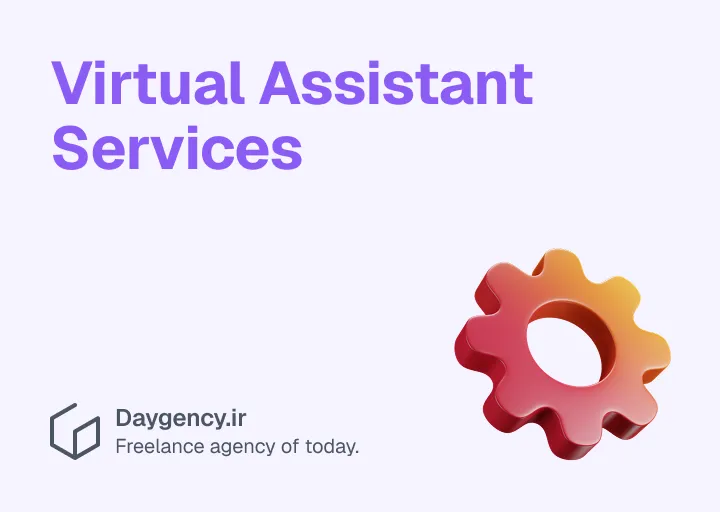Here are some of the most important delegation tips and How to effectively work with a virtual assistant.
Hiring a virtual assistant (VA) can be a game-changer for your business—helping you free up time, streamline operations, and boost productivity. However, simply bringing a VA on board isn’t enough. To truly reap the benefits, you need to delegate effectively.
Effective delegation ensures that your VA understands your goals, works efficiently, and delivers consistent results. In this article, we’ll cover practical tips and best practices to help you build a smooth and productive working relationship with your VA.
1. Clearly Define Your Needs and Expectations
Before hiring a virtual assistant, take the time to identify which tasks you want to delegate.
Tips for Clarity:
- Make a task list: Write down the repetitive, time-consuming, or specialized tasks that are slowing you down.
- Prioritize by importance: Identify which tasks are the most urgent or impactful for your business.
- Set clear expectations: Define the scope of work, deadlines, and quality standards.
Example:
Instead of saying:
“Handle my emails.”
Say:
“Check my inbox twice a day (morning and evening), prioritize important messages, and flag any client inquiries that require my attention.”
2. Use the Right Tools for Collaboration
Effective communication and organization are key when working with a remote VA. Using the right tools ensures clear task delegation, progress tracking, and efficient collaboration.
Recommended Tools:
- Task Management: Trello, Asana, ClickUp, Monday.com
- Communication: Slack, Microsoft Teams, Zoom
- Document Sharing: Google Drive, Dropbox, OneDrive
- Time Tracking: Toggl, Clockify, Hubstaff
Tip: Introduce your VA to the tools you use and provide clear instructions on how you want them to collaborate within these platforms.3. Provide Detailed Instructions and SOPs
When delegating tasks, the clearer your instructions, the better the results.
Tips for Clear Instructions:
- Use step-by-step guidelines: For recurring tasks, create Standard Operating Procedures (SOPs) with clear instructions.
- Include examples: Share samples or templates for consistency.
- Record video walkthroughs: Use tools like Loom to create video tutorials explaining complex tasks.
Example:
Instead of saying:
“Post on LinkedIn regularly.”
Say:
“Publish 3 posts per week on LinkedIn:
- Monday: Share an industry news article with a personal comment.
- Wednesday: Post a success story or client testimonial.
- Friday: Share a tip related to our services.”
4. Set Clear Deadlines and Milestones
Without specific deadlines, tasks can drag on indefinitely. When assigning a task, always specify:
- Start date and due date
- Expected completion time (e.g., “This should take around 2 hours.”)
- Milestones for larger projects
Example:
Instead of saying:
“Work on the research report.”
Say:
“Research the top 10 competitors in our industry. Create a report including pricing, services, and customer reviews. Deliver the report by Friday at 5 PM.”
5. Prioritize Regular Communication
Since VAs work remotely, clear and consistent communication is essential. Regular check-ins prevent misunderstandings and ensure that your VA stays aligned with your goals.
Communication Tips:
- Daily or weekly check-ins: Schedule short Zoom or phone calls to discuss progress.
- Use messaging apps: Keep communication flowing through tools like Slack or Teams.
- Provide regular feedback: Praise good work and offer constructive criticism to help your VA improve.
Tip: Set clear communication preferences, such as how often you expect updates and which platforms you prefer.6. Share Access to Necessary Resources
To enable your VA to work effectively, provide them with access to the resources they need.
Things to Share:
- Logins and passwords: Use secure tools like LastPass or 1Password to share credentials securely.
- Brand guidelines: If they handle content or customer interactions, share your branding style guide.
- Templates and previous work samples: Help them understand your preferred style and standards.
Tip: If you’re concerned about security, provide limited access or guest permissions to sensitive accounts.7. Be Patient During the Onboarding Phase
Even experienced VAs need time to learn your processes and preferences. During the first few weeks, be patient and offer guidance to help them get up to speed.
Tips for Effective Onboarding:
- Start with simple, low-risk tasks before moving on to complex ones.
- Provide clear feedback: Let them know what they’re doing well and where they can improve.
- Encourage questions: Create a comfortable environment for your VA to ask for clarification.
Tip: Set realistic expectations for the onboarding period—typically, it takes 2-4 weeks for a VA to become fully integrated into your workflow.8. Trust Your VA and Avoid Micromanaging
To get the most out of your VA, you need to give them space to work independently. While it’s important to check in regularly, avoid constant micromanagement—it can reduce efficiency and trust.
Tips for Building Trust:
- Focus on results, not processes: If your VA delivers quality results, don’t get caught up in minor details of how they do it.
- Delegate meaningful tasks: Don’t just offload repetitive chores. Entrust your VA with important projects that require responsibility.
- Provide positive feedback: Acknowledge their contributions to foster trust and motivation.
9. Set Performance Metrics and Review Progress
To ensure your VA is delivering value, set clear KPIs (Key Performance Indicators) and review their progress regularly.
Metrics to Track:
- Task completion rate: Are they meeting deadlines consistently?
- Accuracy and quality: Is the work meeting your standards?
- Communication efficiency: Are they responsive and proactive?
- Time management: Are they completing tasks within the estimated timeframe?
Tip: Use weekly or monthly performance reviews to discuss progress and address any concerns.
10. Offer Growth Opportunities and Incentives
To retain skilled VAs, offer opportunities for growth and incentives. Motivated VAs are more likely to stay committed and deliver high-quality work.
Ways to Keep Your VA Motivated:
- Provide training or courses to help them improve their skills.
- Offer performance-based bonuses for exceptional work.
- Recognize their achievements with praise or public acknowledgment.
Tip: Treat your VA as a valuable team member, not just a contractor. This fosters loyalty and encourages them to go the extra mile.
Conclusion: Build a Strong Partnership with Your Virtual Assistant
Effective delegation is the key to getting the most out of your virtual assistant. By providing clear instructions, communicating regularly, and trusting your VA, you’ll build a productive and successful working relationship.
Ready to streamline your business and boost productivity?

Contact us today to learn more about our freelance virtual assistant services and how we can help you scale your business with ease!
